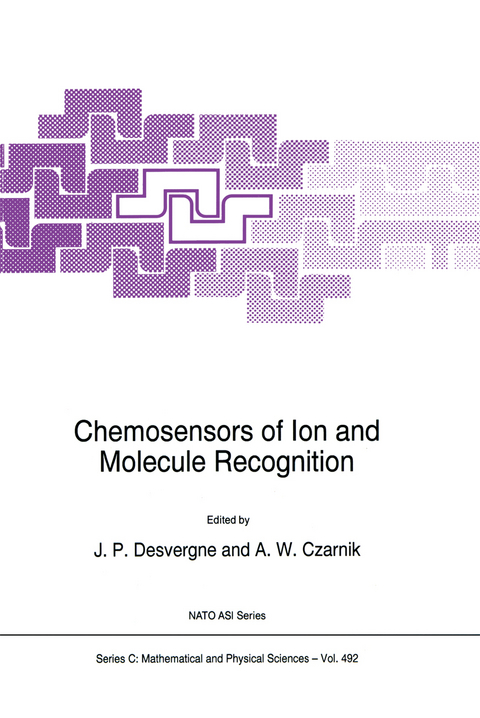
Chemosensors of Ion and Molecule Recognition
Springer (Verlag)
978-94-010-5759-2 (ISBN)
Modification of cyclodextrins to control their guest-host chemistry and their application as chemosensors.- New fluorescent readouts for protein interactions, gene expression, and membrane potential.- Chemical sensors based on field effect transistors; selective recognition of cations and anions.- Aqueous sugar sensing by boronic-acid-based artificial receptors.- Solid state supramolecular optical sensors.- Fluorescent chemosensors which take profit from the metalligand interaction.- Recognition, transduction and immobilisation- A holistic approach to sensor development.- Signal transduction in chemosensors of modified cyclodextrins.- Hydrogen bonding chemosensors for metabolites and nucleotides.- New approaches to sensory materials: Molecular recognition in conjugated polymers. New transduction methodology.- Higher generation luminescent PET (photoinduced electron transfer) sensors.- Chemosensing of monocyclic and bicyclic aromatic hydrocarbons by supramolecular active sites.- Squaraine-based long wavelength fluorescent chemosensors for ions.- A fluorescent chemosensor with selectivity for Hg(II). Chelatoselectivity via ligand immobilization.- Cation-responsive fluorescent sensors.- Fluorescent, siderophore-based hydroxamate chelators for the detection of transition-metalions.- Author index.
| Reihe/Serie | NATO Science Series C ; 492 |
|---|---|
| Zusatzinfo | XXIII, 245 p. |
| Verlagsort | Dordrecht |
| Sprache | englisch |
| Maße | 160 x 240 mm |
| Themenwelt | Naturwissenschaften ► Chemie ► Analytische Chemie |
| Naturwissenschaften ► Chemie ► Organische Chemie | |
| Naturwissenschaften ► Chemie ► Physikalische Chemie | |
| ISBN-10 | 94-010-5759-1 / 9401057591 |
| ISBN-13 | 978-94-010-5759-2 / 9789401057592 |
| Zustand | Neuware |
| Haben Sie eine Frage zum Produkt? |
aus dem Bereich


